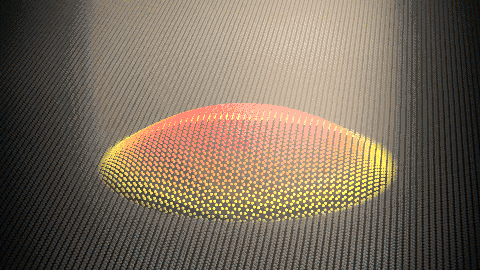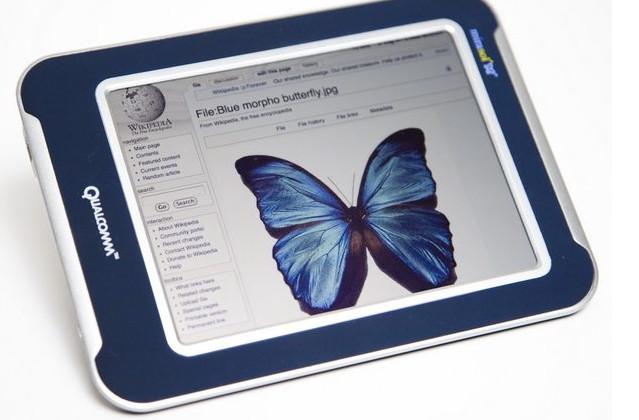Recently, Dutch researchers have discovered a potential new display technology: graphene, which forms a bubble shape, changes color when expanding and contracting. Scholars at the Delft University of Technology in the Netherlands claim that these "mechanical pixels" are likely to be used in the future, becoming a more flexible, durable, and low-energy display than current LED technology. The discovery was an accident when the researchers smashed the graphene-coated silica sheet. These silicon plates are covered with recesses that are about 10 times the diameter of the hair. Graphene covers the cavity like a drum. In dealing with these materials, scientists have discovered that these bubble-like graphenes change color as the pressure in the cavity changes. When the pressure changes, the graphene becomes concave or bulges. This changes the refraction of light, causing it to appear in different colors. Artist's imaginary diagram of graphene pixels Researcher SanTIago Cartamil-Bueno said: “In principle, graphene is transparent, it is so thin that light cannot be reflected by it. But we use double-layer graphene to reflect more light.†When these graphene bubbles swell and smash down, the light needs to shuttle a different amount of graphene to reach the bottom of the silicon oxide cavity. This changes which part of the spectrum is absorbed and which part is reflected. It also changes the color of the graphene bubble. Cartamil-Bueno explained that depressions of different depths can cause different degrees of disturbance to the light, and they also get different colors of reflected light. This is the same principle as Qualcomm Mirasol technology, which uses a statically controlled reflective film. Similar to the E Ink screen, the energy consumption of such screens is very low. When an image is displayed, the display no longer needs any power to keep the display (refer to the paper book device). However, this structure also makes the screens not backlit, you can't use them in dark rooms, they perform best in bright light (the Kindle's backlight is an additional LED illuminator in the device). Qualcomm Mirasol display Next, the researchers looked for ways to precisely control the pressure in each cavity. Although the research has not yet been published, Cartamil-Bueno revealed that their team will draw on Qualcomm's Mirasol solution. Researchers at Delft University are making prototypes for such a graphene screen, and they hope to show the product to the world at the World Congress tech conference next March. They also reminded that the research is still in its infancy. In the end, whether the display made of bubble-like graphene has a superior display effect, and whether it can be mass-produced in the future requires further research. But one thing is certain, the screen made with graphene will be extremely soft and light (and extremely expensive). Valve Mechanism,Valve Operating Mechanism,Overhead Valve Mechanism,Side Valve Mechanism Chongqing LDJM Engine Parts Center , https://www.ckcummins.com

